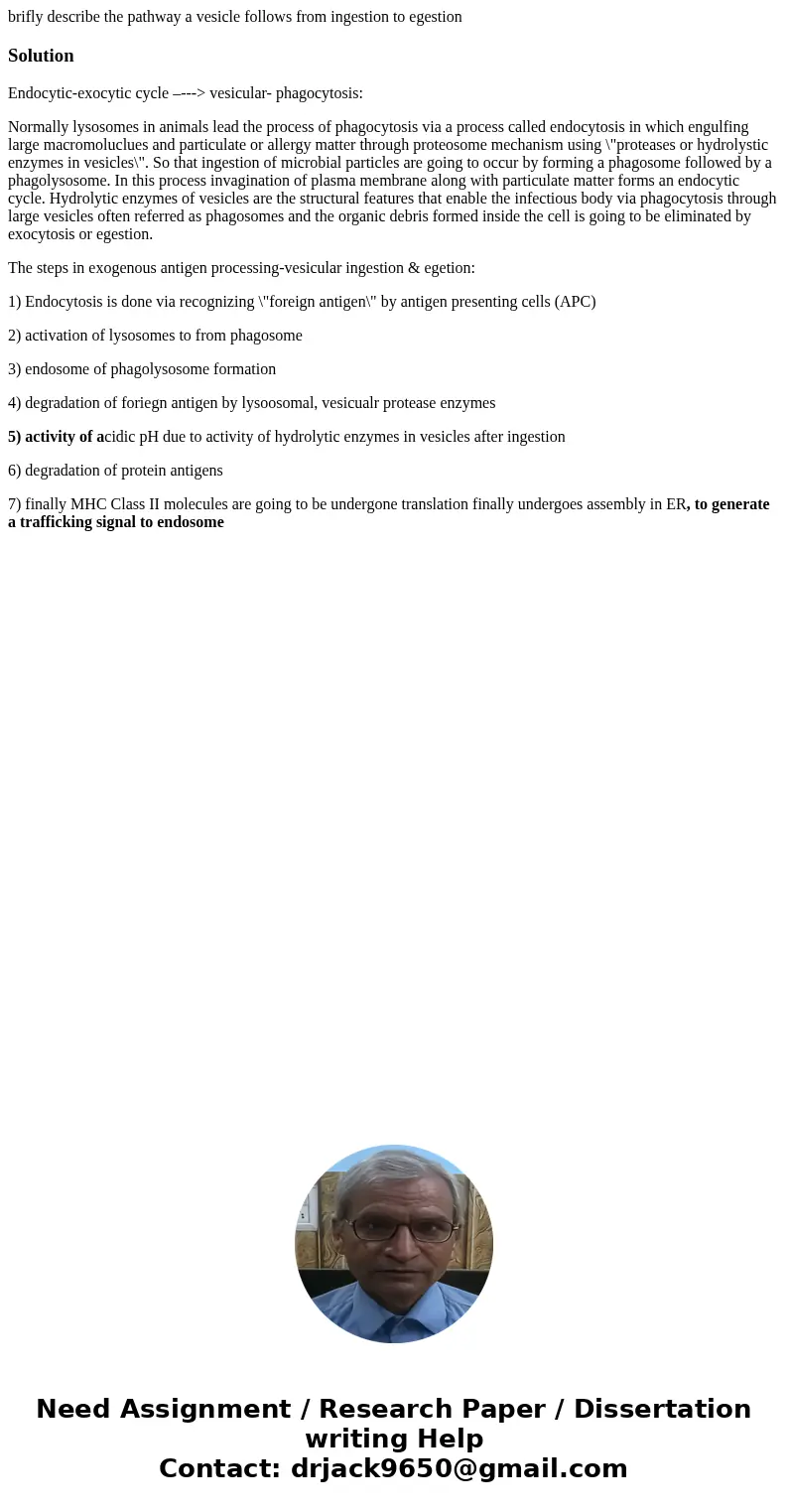brifly describe the pathway a vesicle follows from ingestion
brifly describe the pathway a vesicle follows from ingestion to egestion
Solution
Endocytic-exocytic cycle –---> vesicular- phagocytosis:
Normally lysosomes in animals lead the process of phagocytosis via a process called endocytosis in which engulfing large macromoluclues and particulate or allergy matter through proteosome mechanism using \"proteases or hydrolystic enzymes in vesicles\". So that ingestion of microbial particles are going to occur by forming a phagosome followed by a phagolysosome. In this process invagination of plasma membrane along with particulate matter forms an endocytic cycle. Hydrolytic enzymes of vesicles are the structural features that enable the infectious body via phagocytosis through large vesicles often referred as phagosomes and the organic debris formed inside the cell is going to be eliminated by exocytosis or egestion.
The steps in exogenous antigen processing-vesicular ingestion & egetion:
1) Endocytosis is done via recognizing \"foreign antigen\" by antigen presenting cells (APC)
2) activation of lysosomes to from phagosome
3) endosome of phagolysosome formation
4) degradation of foriegn antigen by lysoosomal, vesicualr protease enzymes
5) activity of acidic pH due to activity of hydrolytic enzymes in vesicles after ingestion
6) degradation of protein antigens
7) finally MHC Class II molecules are going to be undergone translation finally undergoes assembly in ER, to generate a trafficking signal to endosome

 Homework Sourse
Homework Sourse